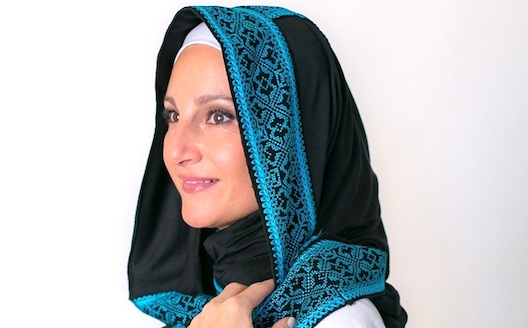How Hijabik is serving the booming hijab market with a lean approach


It’s no secret that many of the region’s online retail companies
are relying on high-end Western brands to keep sales
accelerating.
But when Amy Kyleen Lute and Fouad Jeryes decided to forget Western
brands and focus on selling high-quality, designer hijabs, they had
no idea how quickly their e-commerce venture, Hijabik.com, would take off.
They began simply by posting a few photos on a Facebook page last July to
test the market. Likes- and phone calls- skyrocketed. “We were
completely surprised by how quickly activity accelerated,” says
Lute. “We started getting phone calls with people wanting to order
photos that weren't even ours, before we had even opened for
business.”
The founders weren’t completely surprised; after all, 70% of women
in Jordan wear hijab, and the numbers are even higher in North
Africa, Lute says. In Turkey, the percentage has grown from 3% to
63%, over the past 10 years, and 43% of Muslim women in the U.S.
wear hijab as well.
Both knew a market when they saw one, however. They might be
unlikely founders for a hijab website, but both have brought
considerable startup experience to Hijabik. Lute, who moved to
Jordan from the U.S. in 2011, worked as a key member of the
Oasis500 team, advising startups on investment and scaling
strategy, while Jeryes is a well-known figure on the Jordanian tech
scene who also assisted at Oasis500 and co-founded Amman Tech Tuesdays, a monthly tech
talk series, and TechTech.me, a TV show that focuses
on reviews of tech products and startups.
Thus far, they’ve taken a lean approach. “It was a very
inch-by-inch process,” says Lute. “Test the market, get feedback,
build a little bit more, attract buyers, run a limited marketing
campaign, and test again.”
The founders also looked at their audience’s engagement on other
e-commerce portals in the Arab world; testing several markets in
the region revealed “a huge amount of demand.” Through
word-of-mouth and connections, they began sourcing unique hijabs
from local Jordanian designers, and a few in Turkey. At the end of
2012, they launched an e-commerce site, hosted on ShopGo’s
platform.
What they quickly discovered was that their market thus far is not
just young tech savvy buyers, but mostly, in fact, “aunties and
teitas ordering for their children.”
Rather than head to the balad to haggle at mom and pop stores,
these women were willing to pay for premium quality hijabs
delivered to their doorsteps. “You won't find the majority of our
scarves in the offline market,” says Lute. “No one else is doing
this the way that we are. We're cultivating a certain look, chic
and everyday; simple and easy to match, not too busy, with very
nice materials.”
Thus far most orders are from Jordan, but purchases from the U.S.,
Australia, and Europe are also picking up.
Building from scratch
Succeeding in tapping into large demand doesn’t mean that the
process was easy; responding quickly with a small team meant that
Lute and Jeryes did everything.
They began by buying in batches of only 20 products, with Lute
modeling some of them herself on the site. When they began offering
free shipping, they often delivered the goods themselves.
Occasionally, says Jeryes, “I would come from meetings in a suit
and head directly into deliveries.”
Friends and family also helped out- mostly women- with the modeling
and logistics. The team did all the logos, designs, and
customizations. “We wanted to keep it simple, so that it would work
no matter who the end user is,” says Jeryes. Setting up the whole
operation cost the two co-founders a seed investment of no more
than $2,000, they say.
Considering going offline
One element that has been tricky is serving a market that’s mostly
offline, and primarily prefers to pay with cash on delivery (COD).
Outside of Jordan, Hijabik uses DHL for its overseas deliveries,
yet in the Hashemite Kingdom, they’ve been encouraged to open up an
offline shop.
Rather than insist that the entire market get comfortable with
shopping online, Lute is realistic. It’s something Hijabik might
consider eventually, she admits, while pointing to the example of
successful online retailers like Warby Parker, which evolved from a
purely online model to selling in boutiques and now
opening a store in New York City, leading an online-to-offline
trend.
In Jordan, it’s a trend that makes even more sense. “Being
online or offline is not a binary thing,” says Lute. “Where the
innovation comes in is serving the customer the way they want to be
served.”
For now, Hijabik is focusing on keeping customers happy and
showcasing the diversity of their textiles. “There is a beauty that
we want to project beyond the stereotypes many in the West
associate with the hijab,” says Lute. “Our customer reactions have
been very positive. They are impressed that we care so much about
every detail of the product and experience.”


